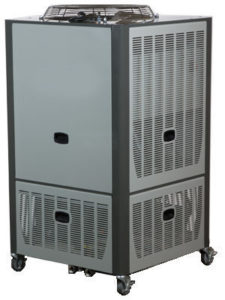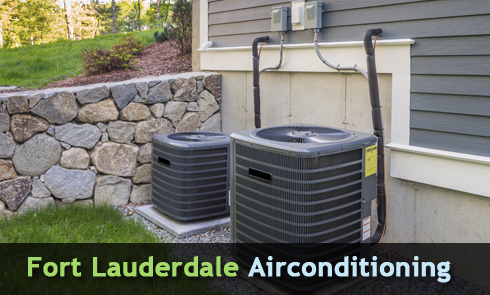
The common image of ACs people are used to are those that resemble the residential HVAC setup comprising cooling coils which use either refrigerants such as R22 and R410A or geothermal energy in order to cool the air and send it back outside. However, at an industrial level, there has been a lot of innovations with ACs using water to enhance the cooling efficiency. According to the American Society of Heating, Refrigerating, and Air Conditioning Engineers (ASHRAE), water-cooled ACs can also be used at the residential level.
As explained by one of the experts, when you spray water on the condenser coils, it enhances the efficiency of heat transfer. However, the only challenge this poses is that you tend to use a lot of water and after some time you can get scaling on the condensers. To avoid the scaling, you have to use demineralized water which is quite expensive.
In the places where the water-cooled ACs are used, you find that they cool a larger building using just a smaller unit. This is because the heat transfer rate is much higher. Common places you find these ACs include hospitals and large industrial buildings.
Prospects in Portable ACs
There are some portable ACs that use water cooling. This allows them to cool air without having to vent out hot air. The heat is transferred through water which means they require a drain outlet and a constant water source. The outlet can be as simple as a sink or faucet. The advantage water-cooled portable ACs have is that they require no exhaust and they make very little noise. On the other hand, they have the disadvantage of being able to cool only a small area.
Evaporative Coolers and Swamp Coolers
Technically, these coolers are not considered true ACs, but they effectively cool air especially in dry climates using water. Evaporative coolers cool the air as it streams into the house. To do this, they use water and as a consequence raises the cooled air’s humidity. They are considered cheaper compared to the conventional ACs. There is no interaction for whatsoever with a refrigerant cycle because all you do is to pump water and allowing it to evaporate.
The downside with swamp coolers is that they raise the humidity in your home because they directly send water into the air. This is why they are appropriate in dry climate areas.
With future innovations, it is expected that they will be rolled out at the residential level much more efficiently and therefore giving homeowners a reprieve when it comes to cooling their homes.





